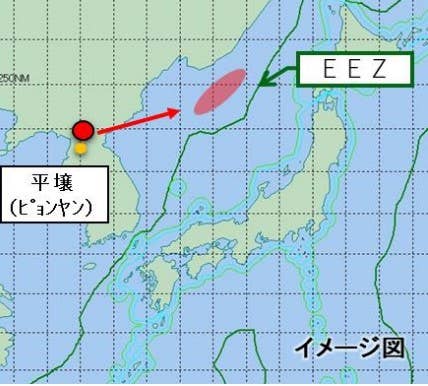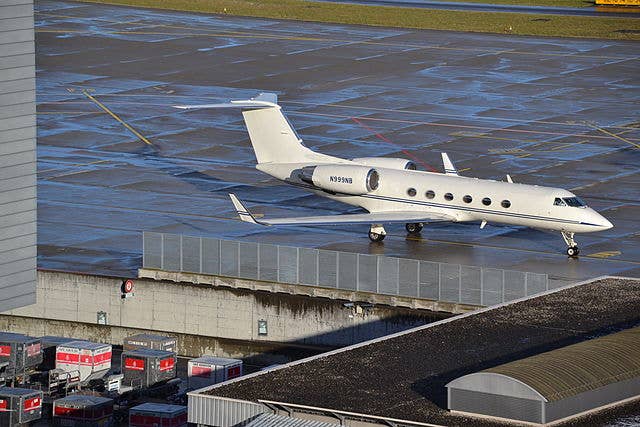Mystery FAA Ground Stop Leads To Speculation On N. Korean Missile Test
There remains much confusion over a brief FAA ground stop issued Monday at 2:30 p.m. Pacific Standard Time (5:30 p.m. EST) affecting aircraft in several western states. It remains unclear…

Japanese Defense Ministry says apparent ballistic missile launched Monday (January 10) by North Korea traveled 700 kilometers. – Map: Japanese Defense Ministry
There remains much confusion over a brief FAA ground stop issued Monday at 2:30 p.m. Pacific Standard Time (5:30 p.m. EST) affecting aircraft in several western states. It remains unclear what the nature of the ground stop was and its full extent, but there is concern that it could have been in response to a missile test-launch by North Korea.
The episode lasted between seven and 11 minutes, according to The Drive, a military information website. Some pilots were told there was an issue involving national security and they were instructed to land, invoking flashbacks to 9/11. Some controllers told pilots the ground stop was a nationwide event, and The Drive posted ATC recordings involving pilots as far east as Arizona and as far west as Hawaii receiving similar information and instructions.
The official FAA statement did little to clear up the confusion: “As a matter of precaution, the FAA temporarily paused departures at some airports along the West Coast on Monday night. Full operations resumed in less than 15 minutes. The FAA regularly takes precautionary measures. We are reviewing the process around this ground stop as we do after all such events.”
Fueling speculation of a connection, the North Korean missile launch occurred just minutes before the FAA action at 2:27 p.m. PST, 7:27 a.m. at the launch site, well inland from the coast. The missile traveled 700 kilometers before falling into the Sea of Japan and was tracked by the Japanese Defense Ministry as well as NORAD (North American Aerospace Defense Command).
The missile tested, the second within a week, has been described as a hypersonic intercontinental ballistic missile (ICBM), but there is some doubt about that. The Drive quoted sources speculating that the missile, which was reported by Asian news source Yonhap News as achieving a speed of Mach 10 (twice the threshold for a hypersonic vehicle), was more likely a boost-glide vehicle or a maneuvering re-entry vehicle (MaRV), which would be able to attain hypersonic speeds. The South Korean defense ministry recently issued a statement refuting North Korean claims that it had successfully launched a hypersonic ICBM on Jan. 5, claiming it was more likely a MaRV—a type of ballistic missile with a warhead capable of autonomously tracking targets.
Based on reporting by CNN and other news sources, the FAA action suggests that the ground-stop alert could indicate the agency has communication protocols in place with NORAD based on concern over North Korea’s expanding ICBM capability, and that a “miscategorized” threat led to the ground stop. But a spokesperson for NORAD said in an official statement that NORAD did not issue an alert over the North Korean launch, or for any other reason.






